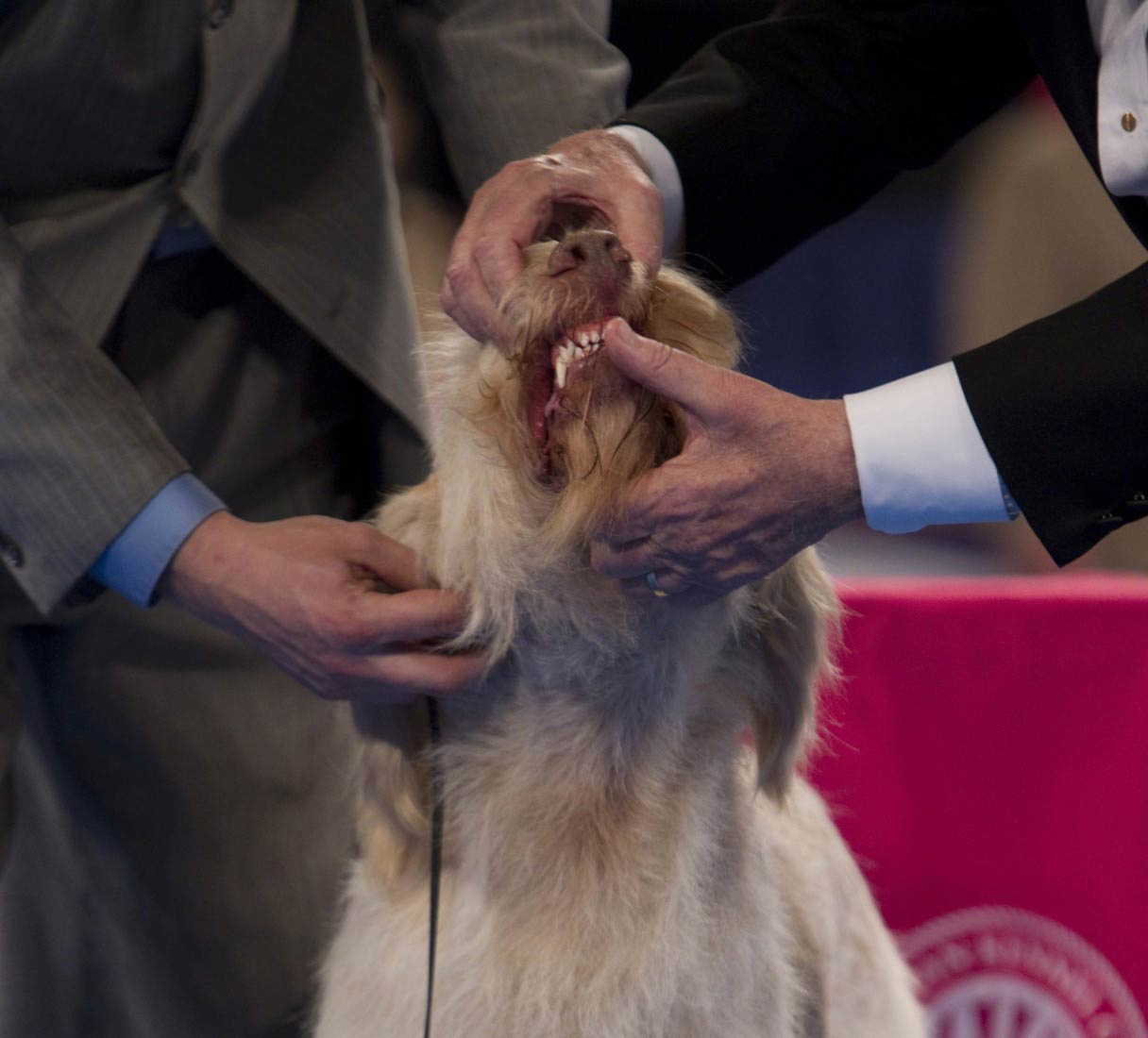“Please show me the bite.”
When determining if a dog exemplifies his breed standard, this portion of the judging exam can be as vital as the down-and-back. And in some breeds, dental structure is among their most defining characteristics.
Many standards are explicit in their bite description, down to an exact number of teeth. Other breeds, such as the Scottish Deerhound, simply require dentition to be strong and level.
Though most fanciers know their own breed’s bite standard, here’s a look at some of the more quirky dental descriptions from each group.
Sporting: For the majority of sporting breed standards, less is more when it comes to describing the bite, which is most often scissors. But the Gordon Setter standard contains an interesting inclusion: Pitted teeth from distemper or allied infections are not penalized.
Hounds: The Otterhound might be known for his shaggy coat and webbed feet, but his bite is certainly the most unique among hound breeds: The jaws are powerful and capable of a crushing grip.
Working: The Working Group contains the most stringent dental standards. For example, breeds such as the Doberman Pinscher, German Pinscher, Giant Schnauzer, and Leonberger must have precisely 42 teeth. That’s why the Cane Corso stands out—the bite is less important than the overall head structure: Bite: Slightly undershot (no more than a quarter inch) and level preferred. Scissor bite is acceptable, if parameters of the head and muzzle are correct.
Terriers: Despite his dandelion coif and saucer eyes, the Dandie Dinmont Terrier is equipped with a set of teeth capable of hunting badgers. The standard spares no words in describing both bite and number of teeth: The teeth meet in a tight scissors bite. The teeth are very strong, especially the canines, which are an extraordinary size for a small dog. The canines mesh well with each other to give great holding and punishing power. The incisors in each jaw are evenly spaced and six in number.
Toy: As companion dogs, most toy breeds have lax dental standards, forgiving a few missing teeth. The Japanese Chin even includes instructions to judges when examining bite: The Japanese Chin is very sensitive to oral examination. If the dog displays any hesitancy, judges are asked to defer to the handler for presentation of the bite.
Non-Sporting: The Bulldog’s bite is among the breed’s signature features, and the standard is precise in its description: The jaws should be massive, very broad, square and “undershot,” the lower jaw projecting considerably in front of the upper jaw and turning up. … The teeth should be large and strong, with the canine teeth or tusks wide apart, and the six small teeth in front, between the canines, in an even, level row.
Herding: Many herding breed standards instruct the judge to overlook broken or missing teeth lost in the line of duty. The Australian Cattle Dog standard provides a perfect visual image of why good teeth are essential to function: The teeth, sound, strong and evenly spaced, gripping with a scissor-bite, the lower incisors close behind and just touching the upper. As the dog is required to move difficult cattle by heeling or biting, teeth which are sound and strong are very important.



